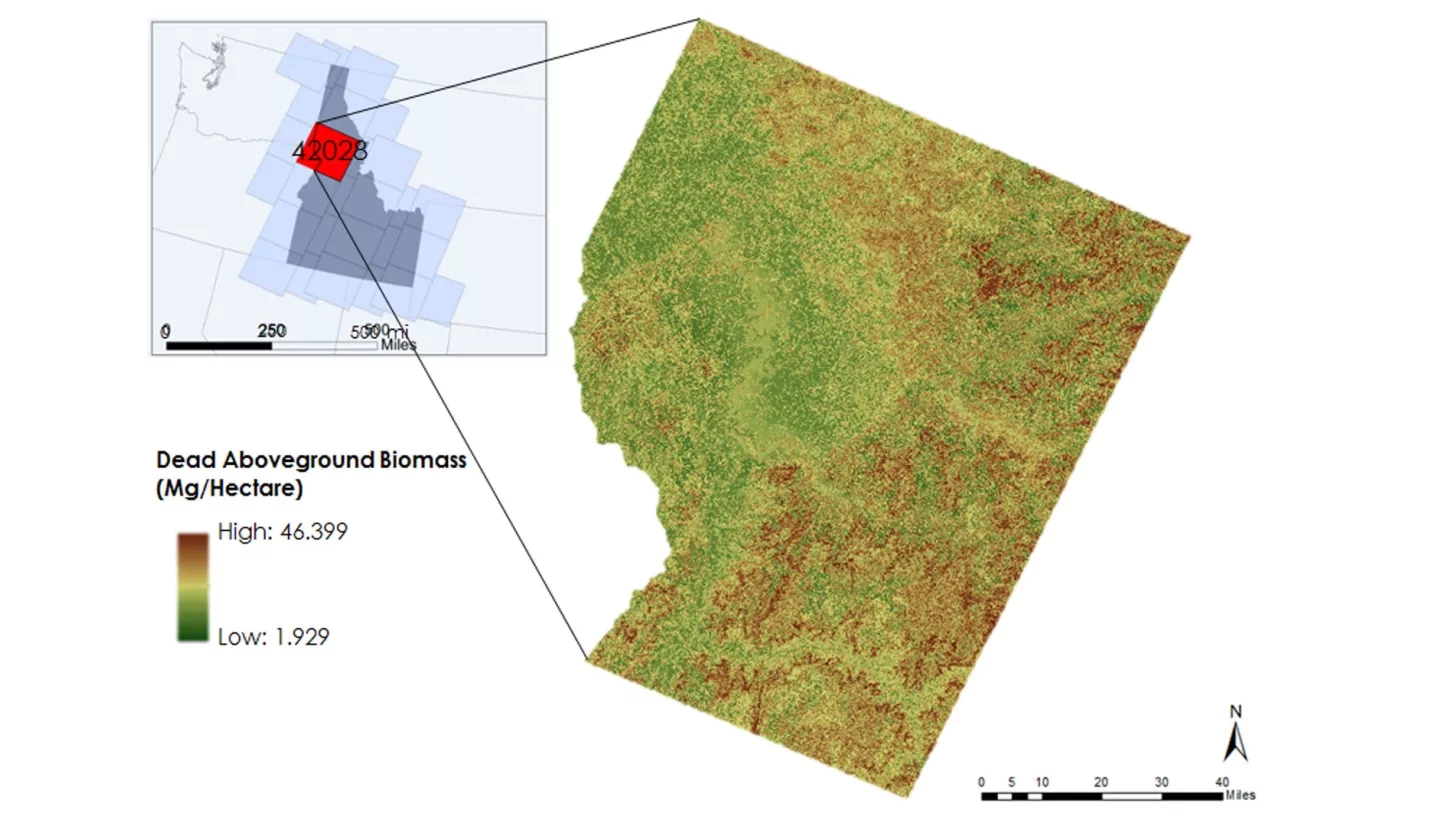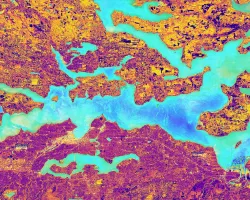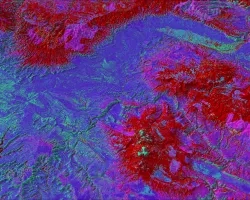
The magnitude and timing of forest disturbances have implications for global carbon cycles and forest ecosystem recovery. The carbon stored in central Idaho forests makes up a significant part of the overall carbon stocks in United States forests. Similar to the broader regional pattern of forest disturbance in the western United States, Nez Perce-Clearwater forests in central Idaho have been increasingly impacted by disturbances from insects, disease, fire, and clear-cutting activities in recent decades. This project estimated the distribution, timing, and drivers of dead biomass with an emphasis on tree mortality resulting from forest pests and disease. The team utilized NASA's Landsat series alongside United States Forest Service Aerial Detection Survey data to determine forest disturbance and recovery trends. Forest disturbance data outputs from LandTrendr, LiDAR-derived aboveground total biomass maps, and forest inventory data were used in a Random Forest Classification model to estimate dead biomass. These results allowed the team to map dead biomass by year and cause, which will be used by partners at the Bioenergy Alliance Network of the Rockies as a primary input in future efforts to determine the economic and environmental feasibility of utilizing dead aboveground biomass for biofuel production.



